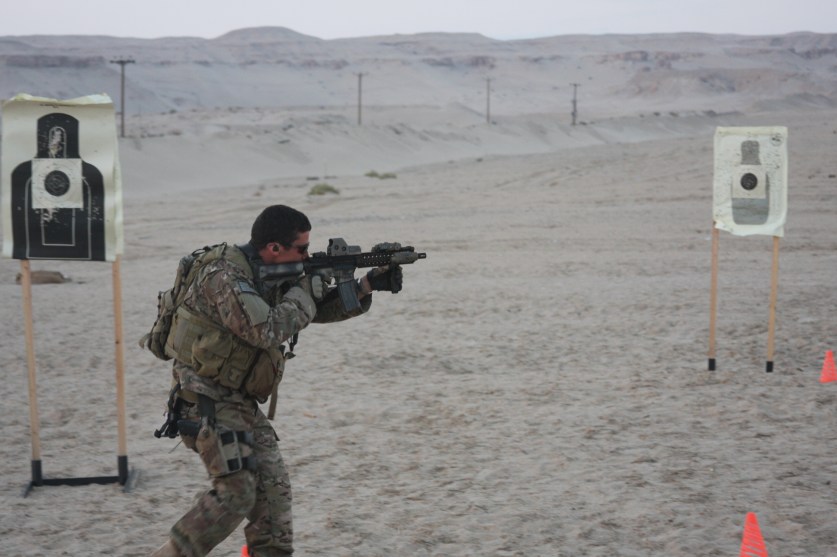GUEST COLUMNIST:
EVAN PERPERIS — A U.S. ARMY GREEN BERET & CHAMPION OBSTACLE COURSE RACER

The interesting thing about being a “good guy” is that you need to have the mindset of a “bad guy” to be truly effective at stopping, countering or understanding their tactics.
The big difference between the good and bad guy is what they do with that information. The bad use it to exploit and take advantage of the weak, while the good use it to train, protect and occasionally take up a profession dedicated to stopping the bad guys.
My background is in the U.S. Army Special Forces, therefore I primarily work in the projectile range of combat. Only when things start going poorly do I have to work in the striking weapon, kicking/punching, and grappling ranges.
So despite having almost two decades of training in the projectile range, I still decided to pick up some lessons from Tiga Tactics to help round out my skills. I knew I had found the right place because they were using lessons I had learned from real world combat that they discovered through analyzing actual footage from Closed Circuit TV (CCTV).
During deployments to both hostile and semi-permissive countries I often carried concealed weapons. Sometimes it was a handgun, sometimes a blade and sometimes based off local laws, all I had was my fist. The techniques I was taught to successfully hide your weapon are the same techniques taught in reverse that allow you to identify someone who is carrying.
Tiga Tactics provides these same tips when they are teaching identifying someone who is preparing for an attack in things like “Stab Proof” and “Club Proof”.
The same justification I have for carrying weapons in a semi-permissive environment when stopped by a country’s security forces, is the same justification criminals will use in the United States. Being able to use something you always have on you, like a fist, is a great weapon that requires no justification and one of the reasons criminals use it (that you can learn about in “Punch Proof”).
Furthermore, using a knife, when size/type are legal, is a great option (as you learn about in “EDC Karambit”).
The strikes taught in their “Toolbox 1.0” program are some of the same strikes I’ve been taught for combat.
The palm heel strike is effective and limits the chance of a fracture in your hand. After all, if I fracture my hand in combat it makes operating a gun or driving a vehicle very difficult. The same logic they use for the palm heel I was taught in offensive driving courses on hand position on the steering wheel. The way you position your hands when driving can help prevent finger breaks to allow you to fire your weapon after a car collision.
I share all of this to tell you that their logic is sound and based off the equivalent of several lifetimes of martial arts training. I can recognize the Tiga Tactics instructors’ logic path because I used it overseas but for a different application. During my deployments to Iraq, my platoon was the most effective in our Battalion at finding enemy weapons caches. We would find them frequently without any direct informant tips. The reason was simple, we put ourselves in the enemy’s shoes and said “where would we hide our weapons if we wanted to be able to attack Americans when needed, but reduce risk of being caught red handed when we weren’t in attack mode”.
The same logic I used in combat, Tiga Tactics as applied to everyday life here in America. If you are looking to get functional as soon as possible (ASAP) check out the full suite of Tiga Tactics courses now available.
ABOUT THE AUTHOR:
Evan Perperis is a U.S. Army Special Forces veteran with a cumulative 44 months of combat deployments. He’s currently a brown belt at Shaolin Kempo Karate, has been trained in Modern Army Combatives Program Level I and is currently training in Kali, Jeet Kune Do, and Brazilian Jiu-Jitsu.
When not practicing martial arts or working, he’s racing as a professional Obstacle Course Racing athlete with more than 65 podium finishes and helping others as a National Strength & Conditioning Certified Personal Trainer (NSCA-CPT). His website is Strength & Speed, and his biography is available in hard copy/digital and audiobook from Amazon.

